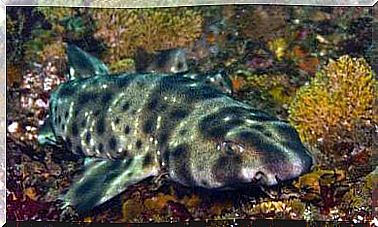Causes Of Nose Depigmentation In Dogs

Cases of nose discoloration in dogs are becoming more and more common . It therefore becomes important to take care of this important element of your pet’s face, essential for breathing and smell.
As in humans, even in dogs, the nose offers useful information on health and mood. Changes in appearance, moisture, or texture can be symptoms of some conditions.
What is nose depigmentation in dogs?
The discoloration of the nose of the dog occurs when the animal shows a distinct change in hue or intensity in this part of the muzzle. The area that was black or brown gradually becomes the same color as the skin (a light pink tone).

However, observing a spotted face is not always synonymous with disease. There are natural and innate factors for the dog that can cause this unexpected color change.
Natural depigmentation
Some breeds show symptoms of depigmentation from birth, in some ways it is even a desired trait to verify pedigree . It mostly happens with the Australian shepherd, the Border Collie and the American Pitbull.
Color degradation in the canine nose can also be a reaction to the absence of sunlight during the winter. The color is recovered with the arrival of summer. Among the breeds most affected by discoloration, we find those with light hair or dogs used to living in cold areas, such as the Siberian Husky, the Canadian Eskimo or even the Alaskan malamute.
A dog’s nose becomes clearer over the years, especially if your pet is surprisingly long-lived.
But if a dog does not fall into this series, the onset of depigmentation must be analyzed more in depth, in order to intervene on the causes that cause it.
What causes nose discoloration?
This nose discoloration can result from internal dysfunctions in the body, but also from external causes:
Internal causes
- Complex vitamin B deficiency.
- Autoimmune / Systemic Diseases.
- Autoimmune and / or systemic disorders
Let’s talk about pathologies such as: Lupus, Hypothyroidism, Pemphigus and Vitiligo. They usually have as their main symptom irritation and depigmentation of the mucous membranes and nose.
- Dudley Nose : This genetic anomaly has as its main symptom the discoloration of the nose in the dog, but it does not constitute a serious risk to the health of the animal.
- Allergies : Some dogs are more likely to develop allergies. The allergic process caused by exposure to some plastic elements can cause nose discoloration. It is recommended that you choose metal containers to feed and give your pet to drink.
External causes of depigmentation
- Excessive sun exposure
Dogs are more sensitive to the sun than humans and, in particular, the nose is one of the particularly vulnerable areas of the body. Depigmentation therefore becomes a normal factor for animals that spend many hours in the open air.
How to prevent depigmentation in dogs?
1. A balanced diet
The most common cause of nose discoloration in dogs is an unbalanced diet that generates a lack of B complex vitamins.
A balanced diet is planned by dosing the quantities and choosing good quality foods. It is important to understand that there is no better or worse food, but only one that is the most suitable for your pet. According to his breed, size, age and lifestyle.
Therefore, the choice of food should be guided by the veterinarian. Follow the advice of the specialist step by step, avoiding excesses and remembering never to give human food to the animal.
2. Constant protection against the sun’s rays
L ‘ excessive exposure to ultraviolet radiation is harmful to both animals and humans. Dogs can suffer from sunburn, rash, irritation, discoloration and even skin cancer.

You will find sunscreen suitable for dogs at regular pet stores. Before a trip or a walk by the sea or in the sun, apply the product on the skin, especially on the nose and ears.
3. Frequent visits to the vet
Diagnosing systemic and autoimmune diseases is a very complicated task. Therefore, it is recommended that periodic visits be made to your veterinarian. A way to keep vaccines and anti-parasite treatments updated and allow the doctor to investigate possible anomalies, in an absolutely timely manner.
Unfortunately, even among animals, there are “silent” diseases that are difficult to diagnose. Small warning signs from the body, such as nose depigmentation in dogs, should never be ignored, let alone underestimated.
Source of main image: Marta Jimenez









